
Today’s Fascinating PRO AUDIO Topic: Field Recorders.
Here are just a few examples of the juiciest little insider “pro tips” you’re about to discover:
- The Long-Time “Industry Standard” in Field Recording: 98% of newbies can just stop reading here and get THIS…
- The Amazing “5 Mic” Field Recorder for Detailed Stereo Recording – Perfect for live music, and breathtaking nature documentaries
- “JUST FOR THE PROS” – Advanced features to know — including “Pre-Record”, “Audio-Record”, “Safety Tracks”…and much more.
- PLUS… The “Rolls Royce” of Field Recorders: With Whisper Quiet Internal Noise Levels. — Ideal for Cleanly Recording Even the Softest Sound Sources.
Best Part: In just a few minutes, one of these “bad-boys” can be on the way to your house — just in time for your next awesome project.
First up…
The Original Standard in Portable Field Recorders
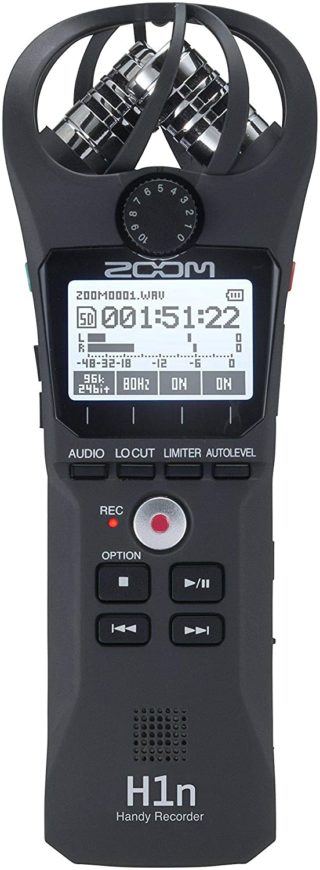
Easily the most recognizable field recorder on the market today…
The Zoom H1n is the updated version of the original modern field recorder: the H1.
For 90% of the people reading this post, this is the model I’d recommend. And here’s why:
- It’s extremely affordable
- It’s super easy to use
- It’s light and portable
- It allows for easy stereo recording
And despite its simplicity, it’s somehow still extremely popular among pros who have their pick of unlimited high-end gear.
- Zoom H1n – (Amazon/Sweetwater/Thomann)
Up next…
A Portable Recorder with 5 Different Mics
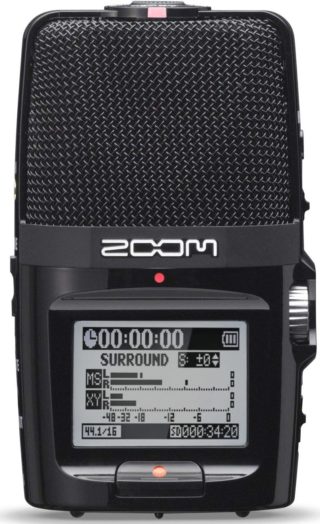
Compared to the H1n, the main upgrade you’re get from the Zoom H2n, is the extra mics:
- 2 in the front – for XY Stereo recording
- 3 in the back – 1 backwards/2 sideways
Together, this combination of mics allows for multiple styles of stereo recording including:
- X/Y – which is the standard method
- Mid-Side – which allows you to narrow or widen the stereo image in post
- 2 Channel Surround – aka spatial audio, which is a type of 360° audio used with the Google Jump VR Platform
- 4 Channel Surround – which creates a 3D image using a 4-channel mix
The H2n also offers a pre-record feature, which essentially records constantly, allowing you to capture moments even when you press record a moment too late.
It offers an auto-record/auto-stop feature, which essentially triggers a recording automatically at a certain volume level, then stops it when the volume drops off.
Overall, it’s a massive upgrade from the H1n, with only a minor upgrade in price.
- Zoom H2n – (Amazon/Sweetwater/Thomann)
Up next…
A Professional Option with 2 XLR Inputs
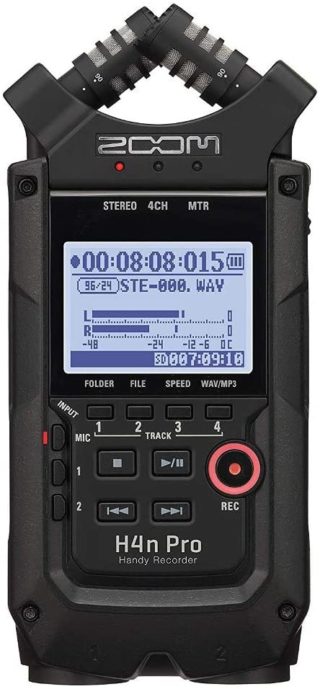
If you’re noticing a trend so far in our selections, it’s simply because of the fact the Zoom recorders truly are the leaders in this field.
And their most popular model ever, is the Zoom H4n.
The main reason why it’s so popular, is that it was the first to offer two XLR inputs, allowing musicians and sound engineers to use any mics they choose.
It also offered many other useful features including:
- 90-120° Swiveling microphones
- Built-in guitar tuner
- 50 Built-in effects
- Audio Interface capability
The most current version of this design, the Zoom H4n Pro -(Amazon/Sweetwater/Thomann), adds several improvements to the original, including:
- Lower Noise Floor
- Higher Gain
- Improved Screen for Outdoors
- Better Pre-amp for Dynamic Mics
Up next…
The Best Portable Audio Recorder for Filmmakers
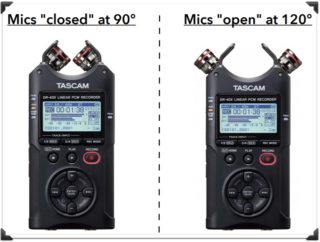
While very similar to the H4n Pro in both looks and features…
The Tascam DR-40x has several added features that Youtubers and filmmakers can both appreciate:
- Line-in input – to connect with cameras and other audio/video devices
- BWF (Broadcast Wave Format) – which handles useful metadata such as timestamping
- Secondary Safety Track – as an insurance against clipping
One more added feature worth mentioning: the dual mics can actually swing fully open for A/B stereo recording.
- Tascam DR-40x – (Amazon/Sweetwater/Thomann)
Up next…
A “Prosumer” Field Recorder with Amazing Built-In Mics
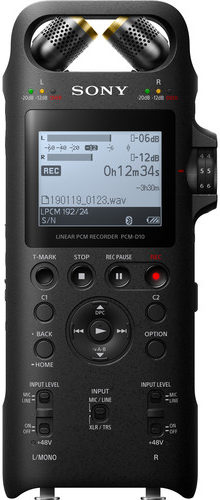
Somewhere between consumer and professional grade models…we have the Sony PCMD-10 – (Amazon/Sweetwater).
Compared to Sony’s high-end field recorders, which are primarly used for ultra accurate nature recording…
The PCMD-10 is targeted more towards typical on-the-go musicians and filmmakers, who are willing to sacrifice a tiny bit of sound quality for the sake of convenience.
And I mean a very tiny bit…since this model has arguably the highest quality built-in mics of any field recorder we’ve covered so far on this list.
And if you need even higher quality, you can always use the external XLR connections to use whatever microphone you desire.
Up next…
The Top-of-the-Line Handheld Recorders in the Zoom Lineup
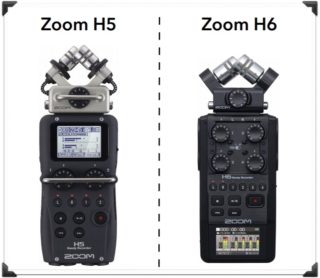
Once more, we’re moving up a level in the Zoom lineup…to the H5 and H6.
The first notable feature is the XLR/TRS combo inputs, which can be extremely useful for having the right connector available at the right time.
The next noteworthy feature is its multiple interchangable capsules that I’ve listed below:
- X/Y capsule
- Mid/Side capsule
- Shotgun capsule
- Mid/Side shotgun capsule
- Extra Double XLR/TRS Inputs
While the H5 and H6 are different in a number of small ways, the one BIG difference that will likely be the deciding factor is the number of XLR inputs. The H5 has 2 (4 with the extra connector), and the H6 has 4 (6 with the extra connector).
- Zoom H5 – (Amazon/Sweetwater/Thomann)
- Zoom H6 – (Amazon/Sweetwater/Thomann)
Up next…
A Field Recorder Capable of 192kHz Recordings
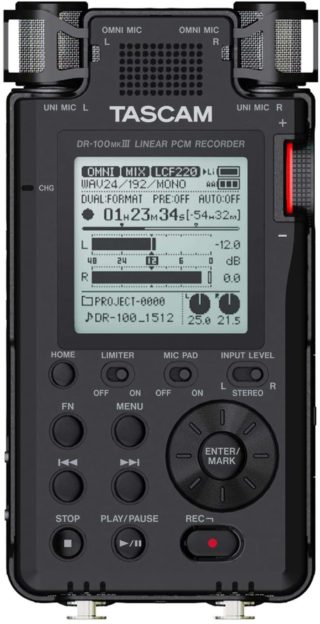
For the most part, the vast majority of audio recordings are done at either 44.1 or 48 kHz.
However, with certain types of critical recording recording applications, where the very highest dynamic range is required…
Higher sample rates maybe used as well, all the way up to 192 kHz.
And the Tascam DR100-mkIII is one of the few devices in its class that can handle this much data through-put in real time.
If you’re not exactly sure why you’d need this feature, then you don’t need it.
But if you do, then I don’t need to explain it to you. So instead, I’ll just give you the link:
- Tascam DR100-mkIII – (Amazon)
By the way, if you found this post useful, I highly recommend joining our free Home Recording Secrets email newsletter where you’ll discover….
- How to Get Your First Studio Up and Running in a Single Weekend
- How to Avoid Wasting Thousands of Dollars on Unnecessary Pointless Purchases
- How to Get a “Million Dollar” Pro Studio Sound in a “Thousand Dollar” Home Studio
- PLUS… All Sorts of Other Amazing Insider Secrets Revealed
And it’s totally FREE! Click here and Enter Your Email to Sign Up.